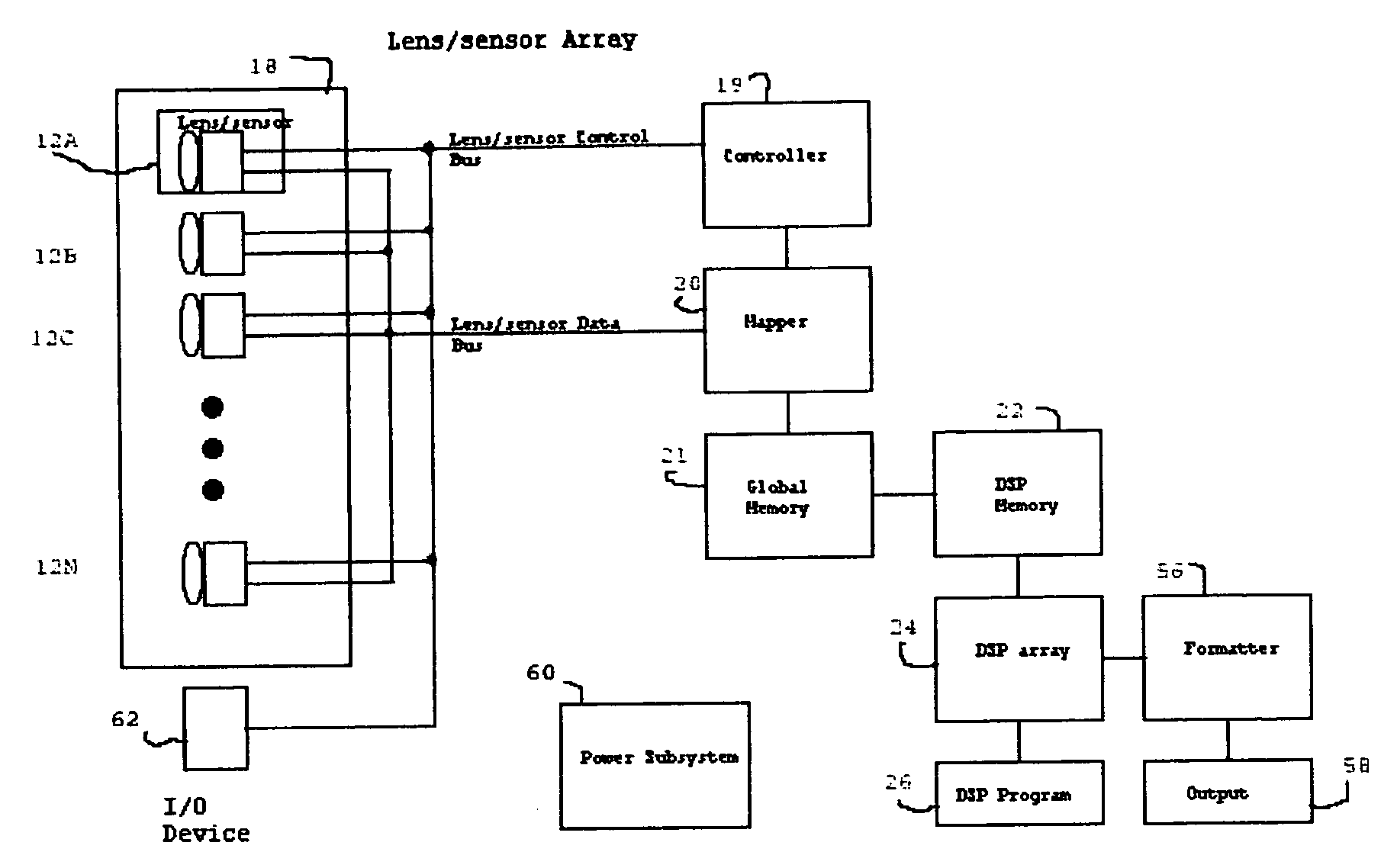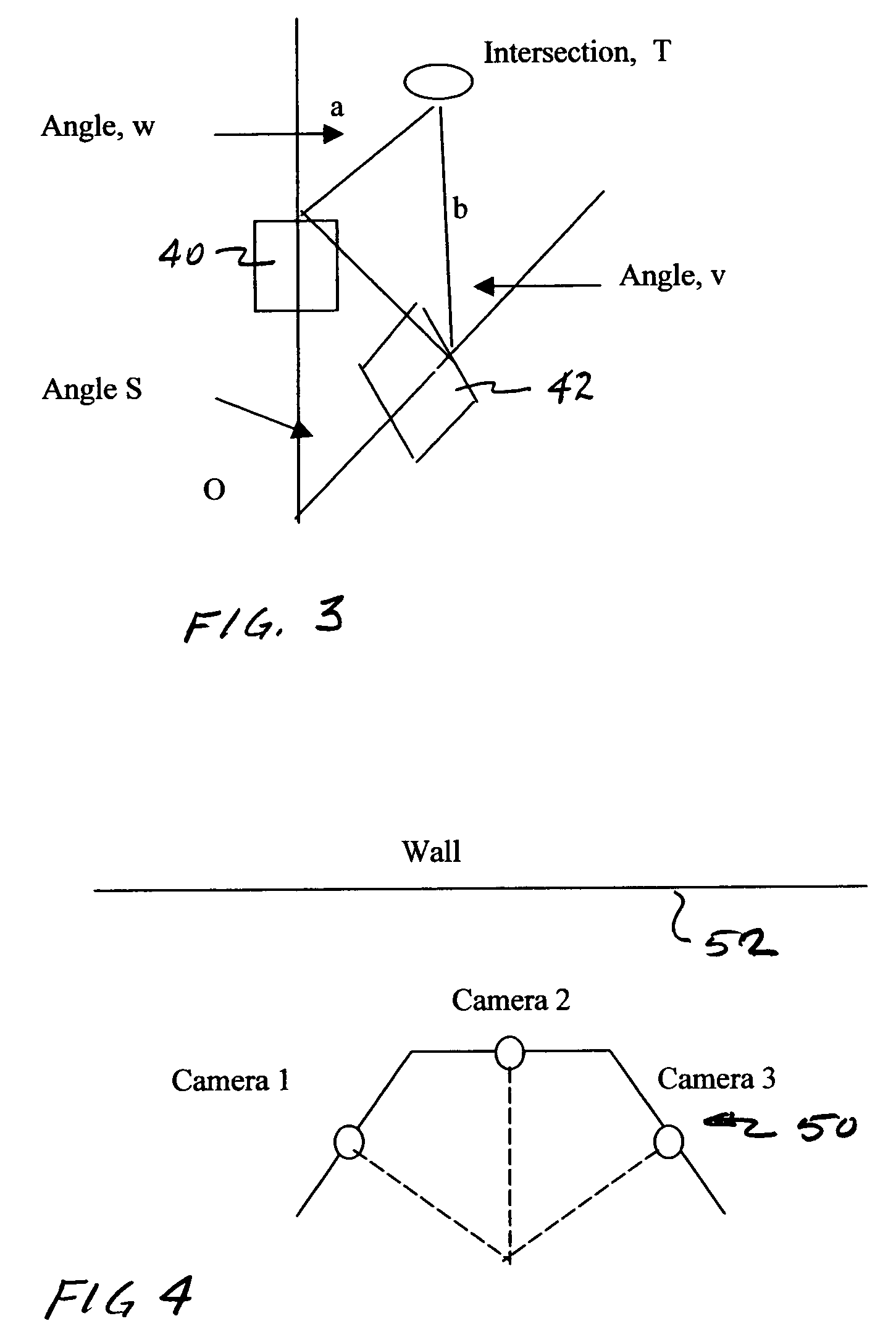Digital imaging system using overlapping images to formulate a seamless composite image and implemented using either a digital imaging sensor array
a digital imaging and composite image technology, applied in the field of photographic image processing and reproduction, can solve the problems of image anomalies, image anomalies, and time slippage from left to right across the composite field of view, and achieve the effect of removing perspective errors
- Summary
- Abstract
- Description
- Claims
- Application Information
AI Technical Summary
Benefits of technology
Problems solved by technology
Method used
Image
Examples
first embodiment
[0025]In another embodiment, the array 18 uses nine Kodak DX-4900 cameras with each camera corresponding to one of the lens / sensors 12. In this embodiment, the camera lens are positioned in a geometry such that each lens / sensor 12 is placed equidistance from a central point and aligned perpendicularly to a radius from such point such that the subtended angle between each lens / sensor 12 is 22.5 degrees. As in the first embodiment, power is supplied using a common 6.3 volt lead-acid battery and individual voltage regulators for each camera. The controller 19 includes additional switching functions for controlling the additional ones of the camera 12 in response to image capture commands from relay activation module 62. In both embodiments, the modification of the cameras to connect the focus and capture controls to controller 19 will be apparent to those ordinarily skilled in the art.
[0026]While the invention as described with reference to FIG. 1 utilizes a plurality of separate camer...
second embodiment
[0068]Near-field objects are then translated to composite image without correction. Finally, the pixel data (objects) are interpolated as required. This does imply that the outer pixels have less resolution than the inner pixels. It also implies that, in order to maintain rectangular coordinates there is not necessarily a 1:1 mapping of pixels. Pixels are, in essence, created through interpolation or removed through averaging. The compromise between pixel density and perspective error is aided by creating images with a very large number of pixels / square area. The second embodiment using lens / sensors from a Kodak DX-4900, for example, has 4.1 million pixels for a 35 mm equivalent. In this manner the oversampling interpolation (pixel creation) and undersampling (pixel averaging) is done with minimal informational loss in the result. Note that when an object is only in one image, the object is indeterminant and is defaulted to be the estimate of the closest known object that is bi-loca...
PUM
 Login to View More
Login to View More Abstract
Description
Claims
Application Information
 Login to View More
Login to View More - R&D
- Intellectual Property
- Life Sciences
- Materials
- Tech Scout
- Unparalleled Data Quality
- Higher Quality Content
- 60% Fewer Hallucinations
Browse by: Latest US Patents, China's latest patents, Technical Efficacy Thesaurus, Application Domain, Technology Topic, Popular Technical Reports.
© 2025 PatSnap. All rights reserved.Legal|Privacy policy|Modern Slavery Act Transparency Statement|Sitemap|About US| Contact US: help@patsnap.com



